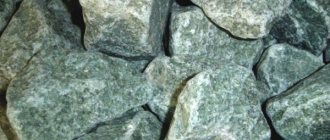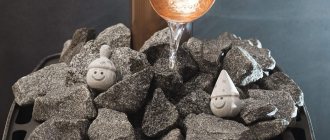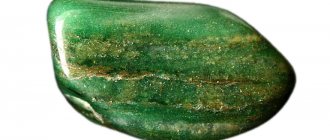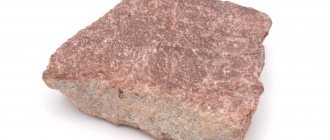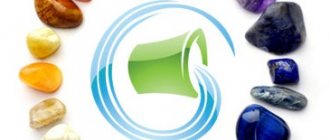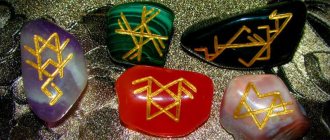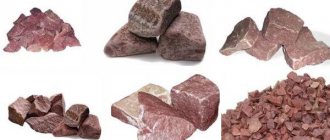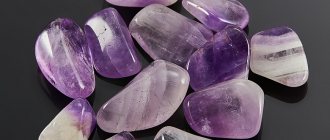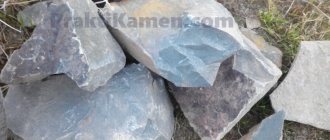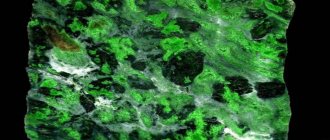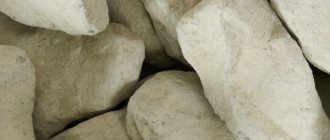Crimson quartzite stone is a rock. In other words, it consists of several minerals, the main one being quartz. This is where the name actually comes from. Topazes, corundum, sericite, pyrophyllite, feldspar, and talc are mixed with quartz in small quantities. When sandstones recrystallize, this mixture is formed. This metamorphosis occurs under the influence of temperature or pressure.
Description
Crimson quartzite, reviews of which are listed in the article below, occupies a separate place among the huge number of types of Karelian minerals. This is a unique stone due to its properties. It is also called porphyry, or Shohan porphyry (due to its external resemblance to the porphyry of Iran). It means “royal stone”.
The mineral combines very high strength, wear resistance, hardness, and also a beautiful appearance.
Crimson quartzite, as demonstrated by medical research, has healing properties. Thus, it stabilizes blood pressure, eliminates ailments in weather-sensitive people caused by weather changes, and also relieves pain in the joints and lower back.
In the bathhouse, Shoksha crimson quartzite makes the steam very light. This effect is achieved due to the low thermal conductivity and high density of the stone, which together gives excellent heat transfer over time.
Historically, this mineral was intended to decorate various majestic structures and buildings in St. Petersburg and Moscow. Perhaps this is the most solemn nugget from the Onega region.
Shokshin crimson quartzite has always been highly valued, which means it was used for finishing particularly significant architectural projects. Based on its mineral composition, it is considered almost pure quartz (about 98%). It is an environmentally friendly material, has almost no radioactivity, and this makes it possible to use it for cladding offices and residential premises. Good resistance to high temperatures provides advantages when using the mineral in sauna and bathhouse stoves.
Wide scope of use
In addition to the construction of sauna stoves, crimson quartzite is also used in other areas of human activity:
- foundations of houses and layers of thermal insulation in residential premises are made from it;
- tumbled and chipped samples are used for roofing work;
- quartzite is used to purify water;
- they cover the top layers of roads and highways;
- it is used for the production of crushed stone, rubble stone, bars and slabs for cladding;
- Durable countertops with high decorative qualities are made from it.
Ferrous quartz was actively used by our ancestors, making tools from them. During archaeological excavations in Mesopotamia, several crimson quartz jewelry was discovered. The age of each of them is approximately 7,000 years, and this is additional confirmation of the strength and reliability of the mineral.
Of course, a sauna heater is a place where you need to closely monitor the condition of the stones and change them periodically. The main thing is to avoid low draft levels and follow the installation rules, and then the crimson quartzite will last a long time, and you won’t have to change it so often.
Chemical properties
Quartzite is obtained from sandstones consisting of large fragments of sedimentary origin held together by natural cement. Some large sandstone fragments are preserved during recrystallization. Consequently, quartzites often have an uneven structure. Crystals of mica and quartz are clearly visible in the mineral. The bonding of such particles of different sizes makes the stone very strong.
The strength characteristic is directly related to the composition of the stone, since quartz (its main component) has a hardness rating of 7 on the Mohs scale. At the same time, topazes, which are also included in quartzites, occupy the eighth line on the scale. The corundum mixed into the rock is only one point inferior to diamonds, the record holders for hardness, whose index is 10 points. In total, the hardness of quartzites is approximately 8 points.
In addition to high strength, crimson quartzite, the properties of which are described in this article, is resistant to temperature. Its negative values have no effect on the stone. Fire resistance is also impressive. The mineral begins to change only at 1770˚C. This resistance to heat makes the stone an excellent raw material for the construction of steam rooms. Raspberry quartzite for a bathhouse, reviews of which are always positive, makes it durable and safe. With active exploitation, the service life of the rock is about 200 years.
The stone does not care about high humidity. The mineral is not affected by various chemical reagents. At the same time, the rock does not react with acids and alkalis. But crimson quartzite is in no hurry to succumb to humans. Due to its increased hardness, it is very difficult to process, which significantly increases the price of products made from this rock. People tend to buy it for special occasions. For example, Napoleon's sarcophagus was made from this stone.
About the ability of white quartzite to ozone the atmosphere of a steam room
This quality is widely advertised by sellers of bath stones and is extolled as the unique quality of this mineral, which can saturate a steam room with ozone, similar to the air after an intense May thunderstorm. The kinematics and nature of the phenomenon are stated as follows. The mineral contains silicon oxide in a very dense metamorphosed structure under the influence of high internal stresses.
As a result of rapid cooling, the structure contracts, which provokes the movement of individual crystals relative to each other and the occurrence of a piezoelectric effect, accompanied by the appearance of a spark, which, due to its electrical potential, converts an air oxygen molecule into an ozone molecule. Experts in mining safety have become interested in the problem, since in the event of a possible collapse of the roof of a mine opening, a spark can provoke a flash of a methane-air mixture and a subsequent explosion.
As a result of the study, the occurrence of a spark was confirmed, however, for its occurrence a number of key conditions are necessary, such as: a certain humidity, the quality of quartzite and applied kinetic energy. How much energy is needed for the transition of an oxygen molecule into an ozone molecule can be calculated using simple calculations. In general, this issue is very reminiscent of the story of filling car tires with inert gas, when every second tire shop had in its arsenal a black cylinder on which was written “Nitrogen” and from which domestic “Ladas” and “Priors” were sold with high racing technologies. The effect is approximately similar.
Material
The mineral is a natural natural stone. It is characterized by a quartz homogeneous composition. Often mined in Karelia. It was used to decorate significant architectural buildings (in St. Petersburg it was used to decorate St. Isaac's Cathedral, or rather its altar, the Kazan Cathedral, and the Winter Palace). This environmentally friendly and beautiful material with excellent physical and mechanical properties can be used for stoves in baths and saunas.
Distinctive features of the mineral:
- has a low water absorption rate;
- has high strength;
- durable;
- has low abrasion.
Mineral composition
The composition of the bath stone includes quartz, iron and fine oxides, sericite, chalcedony and silicon. After processing and polishing, the stone retains its characteristics. After sanding, the material looks attractive. It is often used for finishing baths, stoves and other structures. The mineral is very durable, so it is difficult to process. After polishing, it can retain its shine for three hundred years.
Application
Before laying in a wood-burning or electric stove, crimson quartzite for a bath must be washed with water to remove dust, dried, and damaged and small stones must be thrown away. When placing in a kiln, there should be a small space between the minerals for free air circulation. In this case, the flat, largest stones should be placed in the lower part, and small ones - in the upper part.
The distance between the heating elements in electric ovens when laying stones should remain unchanged. In this case, the heating elements of electric heaters must be covered with minerals (the ideal distance is about 5 centimeters above the heating elements).
Varieties and color
Raspberry quartzite for a bath can be:
In natural conditions you can find different types of quartzite. It can be brown, deep red and yellow, and if it contains certain impurities, it acquires a characteristic purple hue. If the samples resemble black-brown marble or granite in appearance.
Such building materials are certainly expensive, but everything is paid off by their strength and durability. In addition, crimson quartzite has high decorative qualities and is often used for cladding.
Stone in history
This is an amazing stone that, by a fortunate coincidence, has become a symbol of prosperity and luxury. By decree of the tsar, it was prescribed to be used in the nineteenth century exclusively for significant construction projects, therefore, as mentioned above, it can be seen in the decoration of the facades and walls of the Winter Palace, Kazan and St. Isaac's Cathedrals, Mikhailovsky Palace and the Moscow Kremlin.
In addition, it was used to create Napoleon's tomb. The lid and base of the sarcophagus were carved from solid pieces of crimson quartzite. This was a gift from Nicholas I. The delivery of these minerals from Karelia to the Russian treasury cost a lot of money. But it should be noted that the monument to Nicholas I was also made of crimson quartzite.
Prices for this stone are still very high - from 10,000 rubles per ton.
Why quality may suffer
Crimson quartzite has many conflicting reviews. It happens that buyers remain disappointed with the quality, contrary to high expectations.
Why does this happen?
- The first reason is that, like any stone, quartzite can be counterfeited by money-lovers. Synthetic analogues will not be able to withstand heat, temperature changes, or shock. They will quickly lose their shine, then crack and become significantly deformed.
- The second reason is unscrupulous defective stones. An examination will certainly confirm their naturalness, but the processing will be obviously incorrect. Poor heat transfer, rapid formation of cracks, chips, destruction after several kindlings - all these are signs of a violation of the process of preparation for operation and selection of goods.
The ideal procedure goes like this:
- Extracting rock from a quarry using special auto-mechanical equipment without cutting elements.
- Transportation to the processing workshop.
- Rolling to smooth out sharp edges and give uniform shapes.
- Sanding and polishing for a nice texture.
At the finish line, all material is sorted and packaged exclusively in complete, homogeneous units. It is almost impossible to damage them during further transportation.
Raspberry quartzite for a bath: reviews
Reading reviews about this mineral, we can conclude that it is chosen by those who often do not want to buy stones for a bath and are looking for a “durable” option. This stone is able to outlive its “brothers” in all types of bathhouses. It is interesting that pink quartzite is liked by people who care about their health and value the bathhouse for its healing properties - according to many, the stone normalizes blood pressure, improves blood composition and circulation, and eliminates lower back pain and muscle pain.
It is purchased by those who are very sensitive to weather changes, because, as they say, it makes it possible to get rid of this ailment. Of course, there are also negative reviews. However, most of them come down to the very high cost of the stone. Not all bathhouse owners can afford it.
Specifications
The stone is very practical
The description of natural material includes:
- fire resistance;
- durability, which is ensured by tightly intergrown quartz inclusions;
- resistance to mechanical damage;
- high water resistance;
- low degree of radioactivity;
- high degree of hardness;
- low thermal conductivity;
- resistance to external aggressive environments;
- retains its decorative effect for a long time;
- in terms of crushability and frost resistance - 1st class.
- the ability to maintain high temperatures for a long time.
Mineralogical natural bath material must be regularly checked for chips and cracks. The disadvantages of the material include the high probability of “crumbling” as a result of heating and polishing, which is typical for some samples of the mineral.
What are its benefits?
Of course, quartzite began to be used as a stone for baths precisely for its beneficial properties, which, perhaps, only the lazy do not talk about.
- helps well in the fight against rheumatism;
- perfectly eliminates pain in muscles and joints;
- regulates blood pressure;
- cures colds and strengthens the immune system;
- normalizes metabolism in the body.
Of course, these are not all the beneficial qualities that are usually mentioned in connection with the use of quartzite for baths.
The vast majority of people are also talking about stronger and healthier sleep - and just a general improvement in their well-being. Of course, you shouldn’t “blame” the royal stone alone for this: bath procedures, when properly organized, have no less a positive effect on the body, even if completely different rocks are used for kindling. If you often have a headache after a bath, then try quartzite: perhaps this is what will help you avoid the sad tradition.
